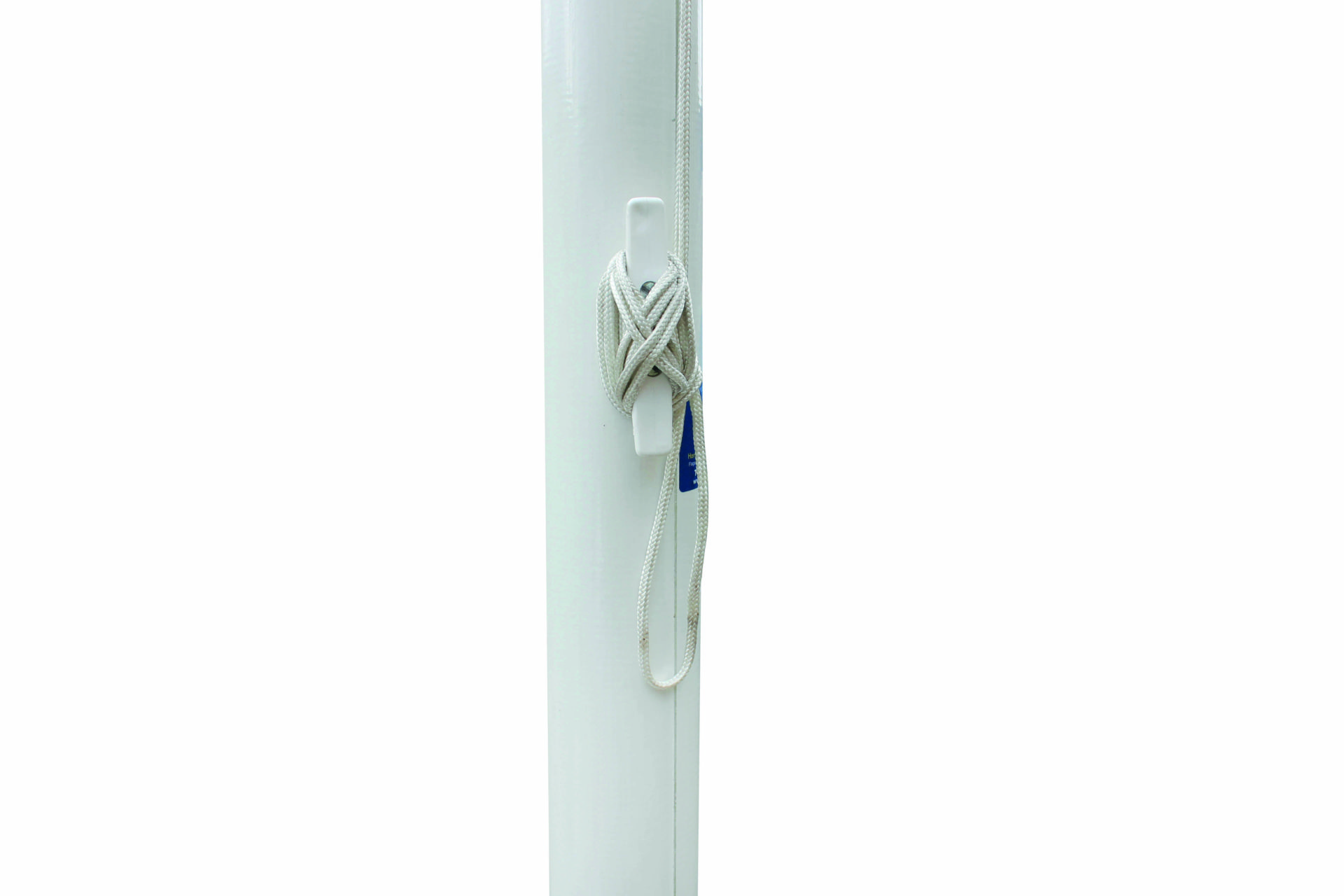

X
This site uses cookies. By continuing to use this site you agree to our use of cookies. To find out more, see our Privacy Policy and Cookie Policy.

A flagpole adds a touch of elegance and pride to any property. However it also faces the brunt of strong winds and harsh weather conditions. To ensure your flagpole stands tall even in the face of Mother Nature, it’s crucial to prepare it properly. Here we offer five top tips to safeguard your flagpole against strong wind.
Start by selecting a high-quality, sturdy flagpole made from durable materials such as aluminium or fibreglass. Ensure the flagpole is properly anchored and installed to withstand strong winds. The shape of your flagpole will determine the wind speeds our pole can withstand. Straight and step-tapered flagpoles can withstand speeds of up to 75mph when unflagged. Our tapered poles can withstand wind speeds of up to 85mph when unflagged.
Perform regular maintenance checks on your flagpole to identify any signs of wear, corrosion, or damage. Inspect the hardware, ropes, and pulleys for tightness and functionality, and replace any worn or damaged components promptly. Our suggested schedule for maintaining your flagpole includes weekly, six monthly and yearly inspections. Most can be carried out by in-house teams but we’d recommend bringing a specialist in annually for a full inspection. Harrison Flagpoles are proud to offer a flagpole maintenance service nationwide. Contact our team to book yours!
Weekly you should carry out a visual check of the halyard for signs of wear or fraying. The six-monthly inspection should include checking the stability of the flagpole and finial. You should ensure there is no wear of external halyards or of the rotating top of swivel arm systems. The Guardsman lock of internal halyards should be checked for operational robustness. Finally, the flagpole should be washed down with warm water and mild detergent.
A log/report (provided by the contractor) should be kept of the specialist service/inspection of the flagpole annually.

Our full flagpole maintenance recommendations can be viewed and downloaded from our website.
Trim back any overhanging branches or foliage near your flagpole. This will prevent them from rubbing against the flag or causing damage during high winds. Clearing the area around the flagpole also reduces the risk of debris becoming entangled in the flag.
Stay informed about upcoming weather conditions and forecasts and take proactive measures. During periods of severe weather, lower the flag to half-mast or even remove it from the flagpole altogether. Flags should be removed from the flagpole when winds exceed 31mph (Beaufort Scale 6). This will lessen the strain on the flagpole from the wind. Prolonged wet weather may also damage your flag, so lower or remove your flags if heavy rain is forecast. Raise the flag again once the weather conditions have improved. If you have a hinged base flagpole, you have the option to lower your flagpole in extreme weather conditions.
It is important to ensure that all external elements of the flagpole are safe and secure. An external halyard is an essential part of a flagpole, but is something that could be damaged in bad weather. A loose halyard can end up getting tangled, which would prove very difficult to unravel afterwards. The solution to this is to ensure that it is tied tightly around the flagpole cleat.

By following these tips, you can ensure your flagpole is adequately prepared to withstand strong winds and adverse weather conditions. Take proactive measures to reinforce and maintain your flagpole. Then you can enjoy the sight of your flag flying proudly year-round, no matter what Mother Nature throws your way.